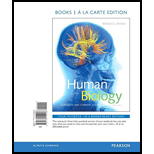
Concept explainers
Introduction:
The overall ability of an organism to fight off foreign disease-causing organisms is known as immunity. It is of two types, including innate and the acquired immunity. Innate immunity is the nonspecific type of defense, providing barriers for foreign agents that may enter the organism. In humans, innate immunity consists of skin, mucous coating the epithelium lining of the urogenital, respiratory and gastrointestinal tract, cytokine barriers, and acid in the stomach, natural killer T-cells, macrophages, and the complement system.
Acquired immunity is the pathogen-specific type of defense. Whenever the human body encounters a pathogen for the first time, a primary response is generated, which is of low intensity as no past memory of this pathogen exists. The primary response also generates memory cells so as to counter the pathogen better in case of future invasion. This secondary response is of high intensity. Both of these responses are carried out by B and T lymphocytes. In response to the antigens, the B cells produce antibodies and the T cells help them. Acquired immunity mediated by antibodies is known as a humoral response. The cell-mediated response is the other type of response, governed by the T-cells.
Want to see the full answer?
Check out a sample textbook solution
Chapter 9 Solutions
Human Biology: Concepts and Current Issues, Books a la Carte Edition (8th Edition)
- Match the immunity concept with the best description. ___anaphylactic shock a. recognizes antigen ___immune memory b. inadequate immune response ___autoimmunity c general defense mechanism ___inflammation d. immune response against ones own body ___immune deficiency e. secondary response ___antigen receptor f. acute allergic reaction ___antigen processing g. presenting antigen together with MHC markersarrow_forwardInnate immune responses include all but (a) inflammation (b) antigen-antibody complexes (c) binding of PAMPs with pattern recognition receptors (d) complement (e) phagocytosisarrow_forwardThe study of the immune system is known as ______________________ .arrow_forward
- The Adaptive Immune Response Is a Specific Defense Against Infection Name the class of molecules that includes antibodies, and name the five groups that make up this class.arrow_forwardMatch the immune cell with its main function. ___dendritic cell a. professional phagocyte ___B cell b. antigen-presenter ___helper T cell c. activates other lymphocytes ___NK cell d. makes antibodies ___macrophage e. kills ailing body cells that lack MHC markersarrow_forwardThe Adaptive Immune Response Is a Specific Defense Against Infection Compare the general inflammatory response, the complement system, and the specific immune response.arrow_forward
- The ability to develop a secondary immune response is based on ______. a. memory cells b. circulating antibodies c. plasma cells d. effector cytotoxic T cells e. mast cellsarrow_forwardWhich of these cell types aids the activation of T lymphocytes by antigens? a. Macrophages b. Neutrophils c. Mast cells d. Natural killer cellsarrow_forwardHumoral immunity is the part of the adaptive immune system involving: A.cytotoxic T cells killing infected host cells B.neutrophils eating bacteria C.B cells making antibodies to target the invading pathogen D.Your skin cells protecting you from infection with the acidic pH on the surfacearrow_forward
- Your neighbor gets treated with an antibody therapy for an infection (donor antibodies were given to them). What type of immunity do they have? A. Passive, naturally acquired immunity B. Active, artificially acquired immunity C. Active, naturally acquired imm. D. Passive, artifically acquired imm.arrow_forward____________interferon, produced by T lymphocytes, activates cellscalled _____________ and is involved in destroying viruses.a. Gamma, fibroblasts b. Beta, lymphocytes c. Alpha, natural killer cells d. Beta, fibroblastsarrow_forward
 Concepts of BiologyBiologyISBN:9781938168116Author:Samantha Fowler, Rebecca Roush, James WisePublisher:OpenStax College
Concepts of BiologyBiologyISBN:9781938168116Author:Samantha Fowler, Rebecca Roush, James WisePublisher:OpenStax College Human Biology (MindTap Course List)BiologyISBN:9781305112100Author:Cecie Starr, Beverly McMillanPublisher:Cengage Learning
Human Biology (MindTap Course List)BiologyISBN:9781305112100Author:Cecie Starr, Beverly McMillanPublisher:Cengage Learning Human Heredity: Principles and Issues (MindTap Co...BiologyISBN:9781305251052Author:Michael CummingsPublisher:Cengage Learning
Human Heredity: Principles and Issues (MindTap Co...BiologyISBN:9781305251052Author:Michael CummingsPublisher:Cengage Learning Biology (MindTap Course List)BiologyISBN:9781337392938Author:Eldra Solomon, Charles Martin, Diana W. Martin, Linda R. BergPublisher:Cengage Learning
Biology (MindTap Course List)BiologyISBN:9781337392938Author:Eldra Solomon, Charles Martin, Diana W. Martin, Linda R. BergPublisher:Cengage Learning
 Medical Terminology for Health Professions, Spira...Health & NutritionISBN:9781305634350Author:Ann Ehrlich, Carol L. Schroeder, Laura Ehrlich, Katrina A. SchroederPublisher:Cengage Learning
Medical Terminology for Health Professions, Spira...Health & NutritionISBN:9781305634350Author:Ann Ehrlich, Carol L. Schroeder, Laura Ehrlich, Katrina A. SchroederPublisher:Cengage Learning





